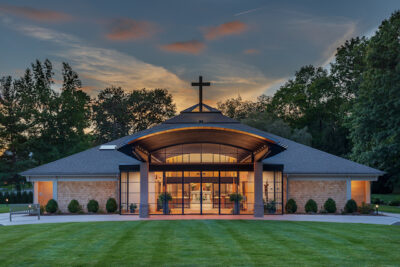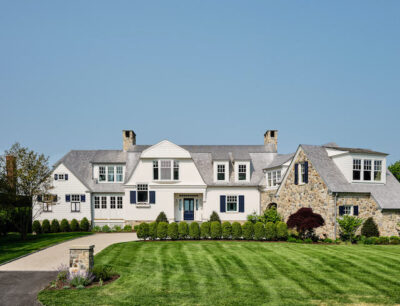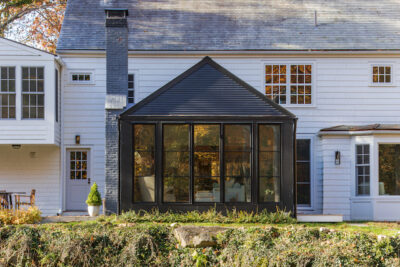
With offices in Darien and Manhattan, Burr Salvatore Architects takes its inspiration from history “to craft timelessly beautiful environments.”
Recently, principals Mary Burr and Ryan Salvatore spoke with Westfair Business Journal about when it’s time to revamp your house or rebuild entirely:
Mary, Ryan, what are the factors in considering whether to refurbish or chuck it all and start from scratch?
“There isn’t a magic formula on deciding whether to renovate or rebuild, because there are myriad factors that become drivers: How do the client’s ambitions for the project overlay onto the existing house? What is the condition of the existing house? Are there any architectural, emotional or regulatory merits in keeping the existing house? At some point it often becomes clear that it is more efficient, either from a logistics or a budget standpoint, to rebuild, but even then there may be emotional attachments that motivate everyone to renovate instead.”
Can you give us some recent examples from your own work?
“We recently completed a significant overhaul and addition to a 1929 Georgian house set high on a crest with fabulous water views beyond. The original house was just perfectly scaled, but it was too small to accommodate our client’s program. We were able to dismantle some unsympathetic additions that had been constructed and to mine the existing house for the details that governed the improvements we made. We detailed precise reconstructions of brick and eave elements, but we toned them down in certain areas to maintain the hierarchical integrity of the original, central part of the house. The result is a seamless addition that is a complement to the existing house rather than a competitor to it.
“We are currently being considered for a completely different type of project – one that has an existing outbuilding sited along a coastal bluff, which would never be permitted today. In this case, no matter what the state of the building – and it’s pretty grim – we know that we have to salvage it. In this particular case, it will mean being very intentional about the proposed improvements so that we can meet the regulatory restrictions on such a special site. But in the end, it will be worth it, because the siting is so special.
“We regularly encounter houses that could not be recreated today for one reason or another, but which are just obsolete relative to the way people live. Those are challenges, because it can be gut-wrenching to see irreplaceable craft just discarded. But the reality is that we design houses in which our clients live, not museums in which they tiptoe around details.”

When working with zoning regulations, is it better to start over or work with what you have?
“There is not a one-size-fits-all response. If a structure is grandfathered in, because it predated a zoning regulation – for example it is within a setback, or it is in a flood zone where building new would require razing it – then sometimes it is more efficient to work with what exists.
“There are, however, scenarios where the regulations encourage owners to tear down their existing house and start fresh. On waterfront sites located within a FEMA (Federal Emergency Management Agency) flood zone, there are often limits on the amount you can spend to improve these houses before being required to bring them into compliance with the flood regulations. Unfortunately, compliance either means bringing the existing house out of the flood plain, which is costly and which can compromise its relationship to its neighbors in meaningful ways, or razing it and starting anew. Unfortunately, we have seen many historic waterfront houses torn down rather than renovated as a result of this type of regulation.”
How does renovate or rebuild apply to an historic house?
“We love old houses. We live in one ourselves. They carry a character and patina that comes with age and which new construction cannot replicate. As much, they have a story to tell – how that one particular step creaks or the floors are subtly worn by traffic patterns. These fun little reminders can often trigger wonder at who once lived there or how life has changed over time.
“There are trade-offs, however, that often come with restoring old houses. For example, depending on the vintage, the ceilings may be 8 feet (or lower), and that is not an easy fix. The basement may be a low, dank environment that is not conducive to finishing or even for use as storage.
“Conversely, there are a number of things that we can readily update in old houses. Single glazed windows can easily be replaced for more efficient ones or walls opened and insulation installed. If the house has radiators and/or window units, it is generally straightforward to introduce a forced air system that feeds the second floor from the attic and the first floor from the basement. Siding, roofing and finishes are all cosmetic changes that can introduce new life into an old house. If the house has an historical value, we would always prefer to renovate it rather than tear it down, but the decision depends both on the client’s aspirations, as well as the condition and character of the house.”

What about projects that crop up as a renovation unfolds?
“Regardless of how things unfold, we advise all of our clients to hold a contingency and to plan to spend that contingency like they would any other budget line-item. There are always going to be unknowns, but if we can blunt the effect by planning for them, it always helps.”
And what about an additional renovation that needs to be done, even though the client thinks it’s wasteful?
“When the project is done, we never want our clients to look back and feel like a three-year-old bathroom was the tail wagging the dog on a $3 million investment. That’s not to be cavalier about the cost of existing conditions, but it is to suggest being smart about what the main decision-drivers should be. And almost universally once the clients have moved beyond that unpleasant expenditure, they realize it was the right decision in the service of the best possible overall outcome.”





















